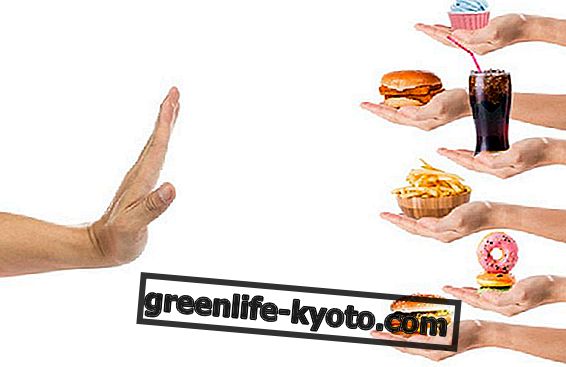
Food waste is one of the causes of the environmental deterioration that closely affects each of us, especially at times of the year such as Christmas, when the abundance of food on the table often reflects bins full of avoidable and unnecessary garbage .
The data on this type of waste can give us an idea of the importance of our choices and our actions: in the first FAO report on food waste and loss (2011) a worldwide food waste is reported of 1, 3 billion tons per year, equivalent to one third of the food produced for human consumption.
In 2013, FAO published another report that constitutes the first study on the environmental impact of food waste, thus opening up a more detailed scenario on the subject. According to this study, 250 km ³ of fresh water from blue or surface water sources, 1.4 billion hectares of agricultural land (about 30% of agricultural land area) are used to produce the food that is then wasted. worldwide) and 3.3 billion tons of greenhouse gases are produced.
These are really impressive figures. But what are our responsibilities and what can we do to significantly reduce the extent of these wastes?
Domestic food waste
According to data presented in 2010 by the European Commission on food waste, the greatest losses occur at the domestic level (42%), followed by the level of production (39%), catering (14%) and distribution (5%). Therefore, as consumers we have a fundamental role.
The main causes of domestic food waste are:
- the low value associated with food,
- the preference for certain parts of the food that leads to discarding others,
- failure to plan purchases,
- lack of knowledge of the products,
- inadequate storage and packaging,
- the confusion over the indications "to be consumed preferably within" and "to be consumed within".
Fortunately, where a problem exists, its solution also exists. Certainly it is essential to learn to do the shopping in a rational way, avoiding buying more than necessary, but when we are unable to consume everything we have in the fridge or in the pantry you can resort to Food Sharing.
Ecological and anti-waste cooking: here's how
The first experiences of Food Sharing
Food Sharing was born three years ago in Cologne, Germany, thanks to the initiative of Valentin Thum and Stefan Kreutzberg. Concerned about food waste even before FAO data were published, they decided to bring surpluses together with people interested in using them through a platform on which anyone can register.
The strength of the initiative lies in the fact that it is not aimed only at individuals, but also at companies, commercial establishments and restaurants . Furthermore its rules are simple, it is enough to respect the sanitary norms (for example it is not possible to share expired food).
In addition to operating through an online platform, which gives the possibility to create a sort of shared virtual refrigerator, Food Sharing is working in Germany also in less technological ways, which allow those without a smartphone or internet access to exchange excess food. For example, in Kreuzberg, a district of Berlin, two large refrigerators have been installed from which it is possible to stock up for free on various kinds of foodstuffs.
Discover the Italian anti-waste project Last Minute Market
Food Sharing in Italy
In the wake of the German experience, even in Italy Food Sharing has been approaching timidly since 2013. Let's see some options for those who want to donate and / or acquire surplus food products for free.
- S-change food is a platform that allows exchanges and sharing of foodstuffs with friends, neighbors and strangers not only to reduce waste but also to strengthen neighborhood social relations.
- NextDoorHelp, conceived by four young engineers, works through a geolocation system that allows you to view the foods available in a radius of four kilometers.













